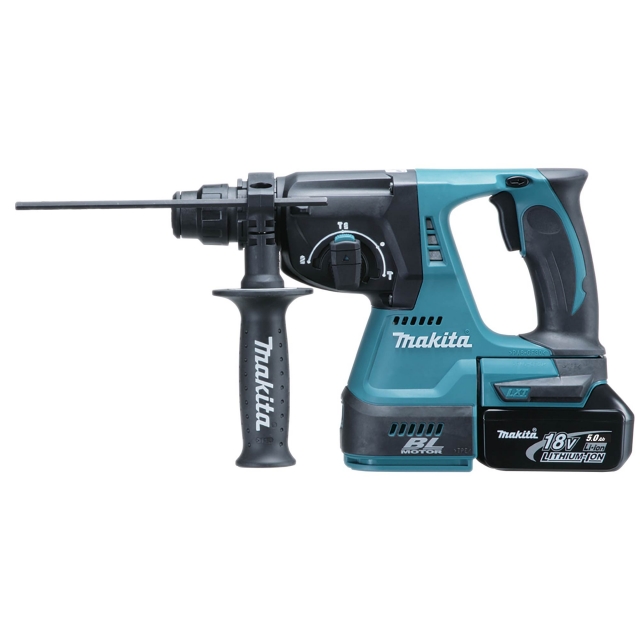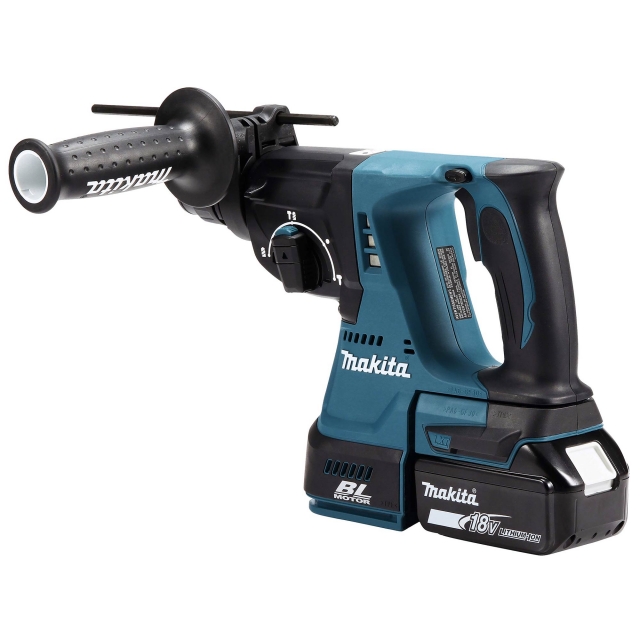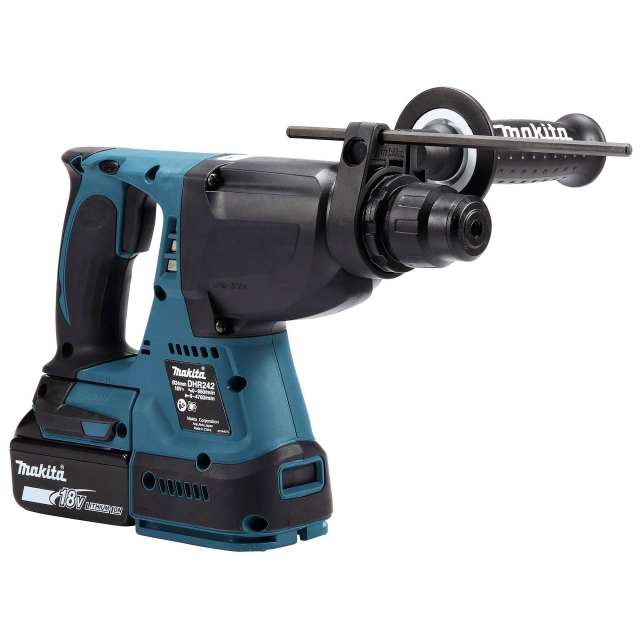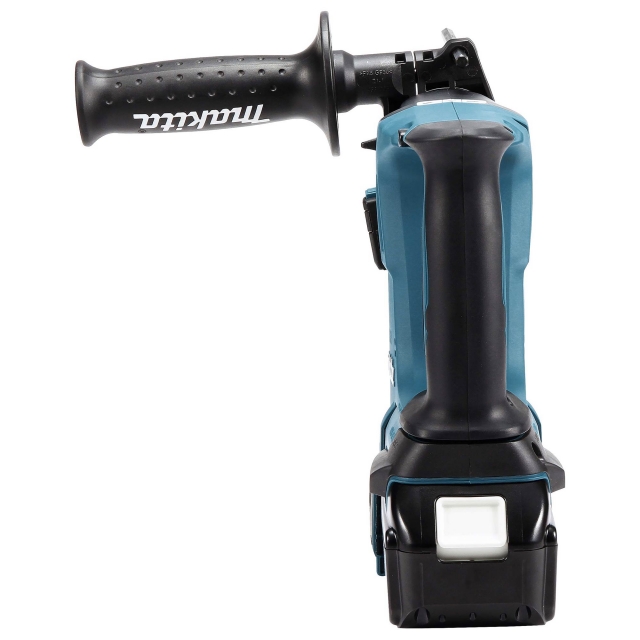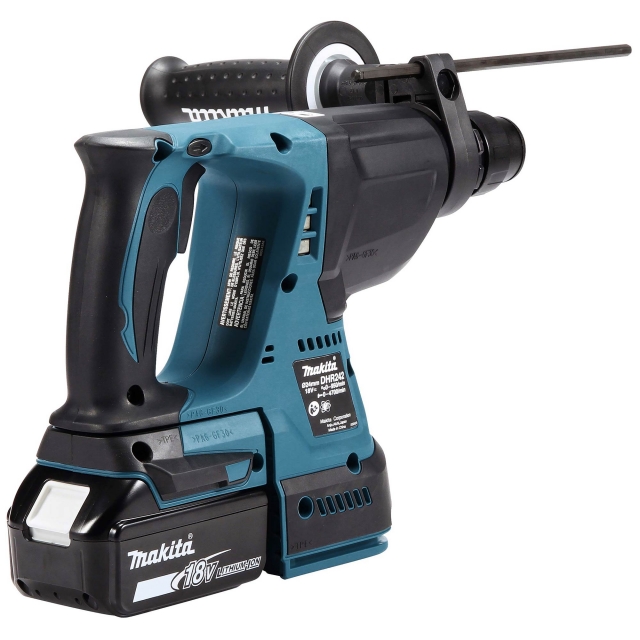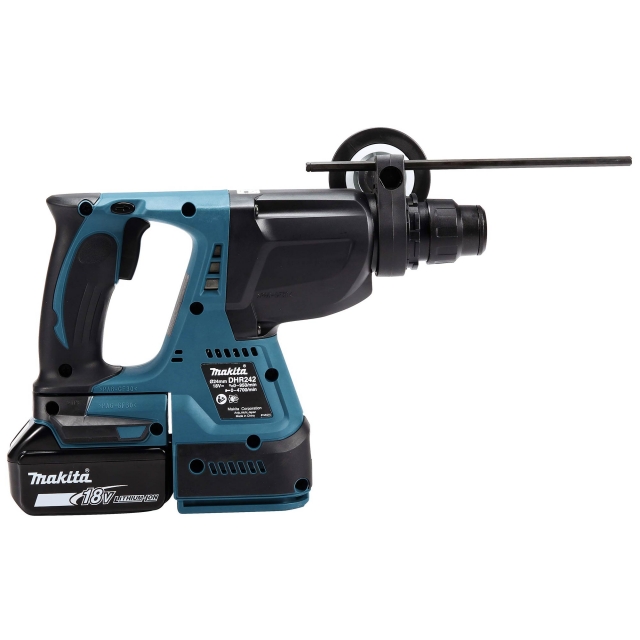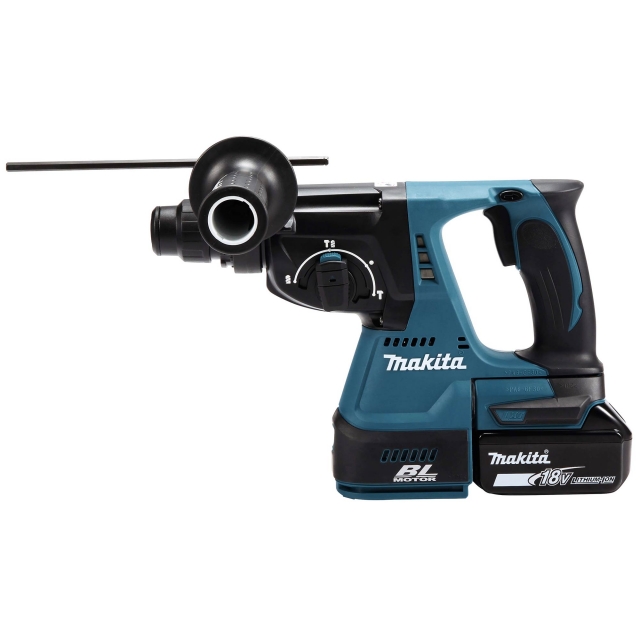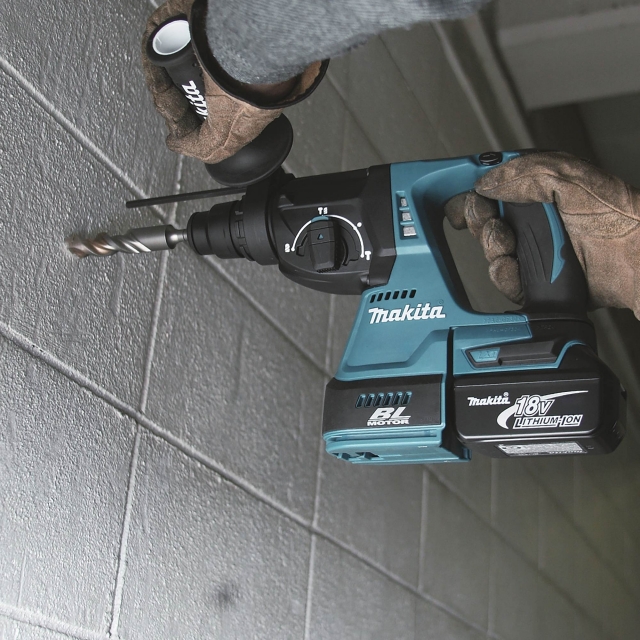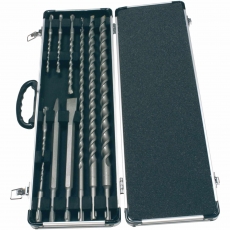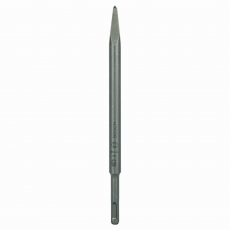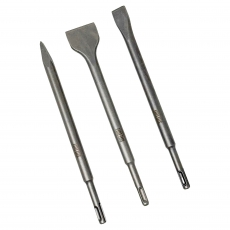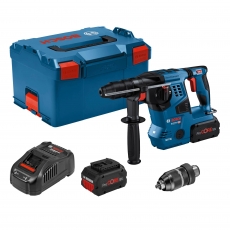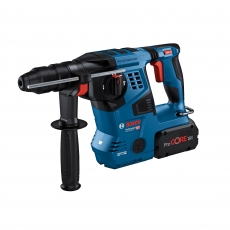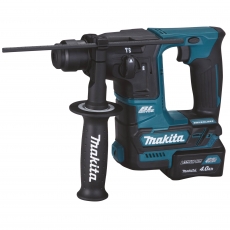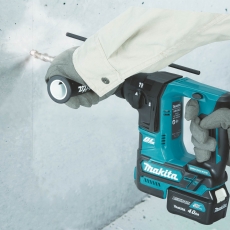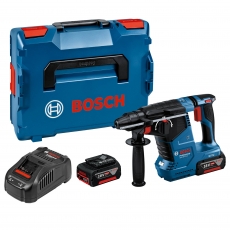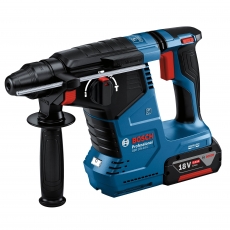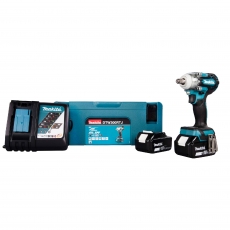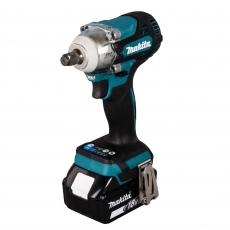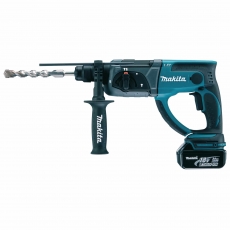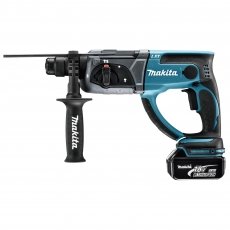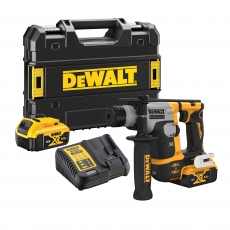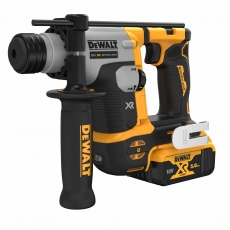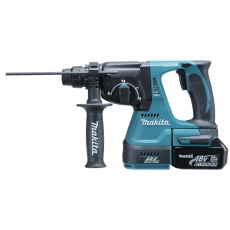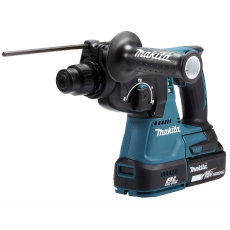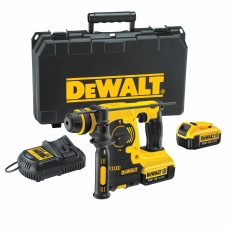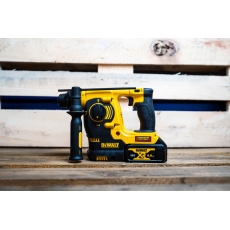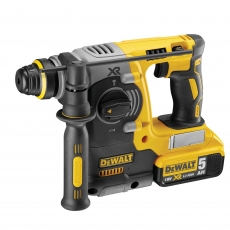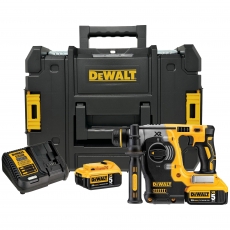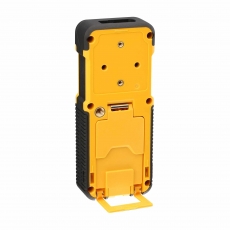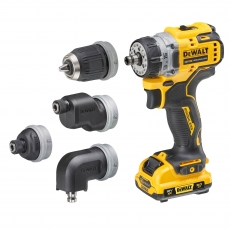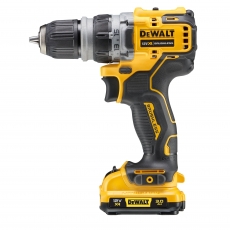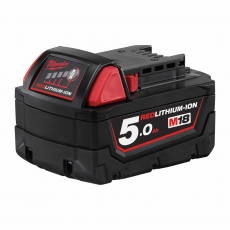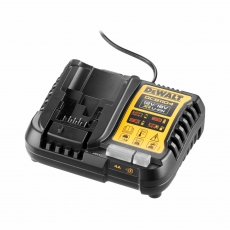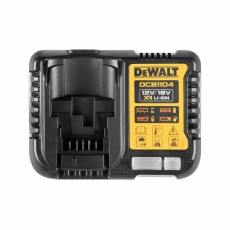MAKITA DHR242RTJ 18v Brushless SDS Rotary Hammer Drill with 2x5ah Batteries
MAKITA DHR242RTJ 18v Brushless SDS Rotary Hammer Drill with 2x5ah Batteries
Why Not Add
VAT (£19.40 ex VAT)
VAT (£2.04 ex VAT)
VAT (£33.60 ex VAT)
VAT (£3.57 ex VAT)
What’s Included
- 2x BL1850B 18v 5Ah Li-ion Batteries
- DC18RC Compact Charger
- MAKPAC Connector Case (Type 4)
- Depth Stop
- Side Handle
- Number of Batteries Supplied: 2
- Voltage: 18v
- Type: Brushless
Product Overview
Part No: DHR242RTJ(MAKPDHR242RTJ)
Features & Benefits
- Able to drill in concrete as fast or faster than 24V Cordless Combination Hammer model BHR200.
- One touch slide chuck for SDS-plus bit.
- Easy-to-grip handle ergonomically designed to: give maximum power thrust. provide a sure and comfortable grip in any operation; overhead application, drilling with palm-up or palm-down grip.
- 3 mode operation Rotation + Hammering Hammering only Rotation only
- The tool body is seperated into the upper and lower housings at the foot of handle portion where the houses are jointed with vibration absorbing cushion rubbers.
- Higher productivity than model BHR202 achieved by using efficient Brushless DC motor to reduce energy loss by 30%
- Unique rubber joint construction suppresses the transmission of vibration to battery terminals, minimizing battery failures such as terminal breakage or poor electrical contact.
Technical Specification
- Battery Type: Lithium-Ion
- Voltage: 18 v
- Battery Quantity (5 ah): 2
- Capacity in Concrete: 24 mm
- Capacity in Steel: 13 mm
- Capacity in Wood: 27 mm
- Impact energy: 2.0 J
- Blows per minute: 0 - 4700 bpm
- No Load Speed: 0 - 950 rpm
- Vibration: Drilling: 3.5 m/sec²
- Vibration K factor: 1.5 m/sec²
- Vibration: Hammer Drilling: 13.5 m/sec²
- Vibration: Chiselling: 10.5 m/sec²
- Net weight: 3.2 - 3.7 kg
FAQs
Cordless SDS Plus Hammers are tools which pack a lot of punch. They’re designed for driving into masonry, which means that they need to rotate as quickly as possible. On top of that, because their primary role is as a hammer drill, the impact rate – measured in either impacts per minute (ipm) or blows per minute (bpm) is definitely an important characteristic to consider. You should also check the maximum drilling capacity, which determines how far the tool will go into the material you’re working with.
The main differences are in the kind of drill bits they use and the amount of power they can bring to a task. Slotted Drive System drills use bits with slots or indentations and a pair of sprung ball bearings at the end of the shaft, which ensure a snug fit into the chuck. The fact that SDS drills usually have faster rotations and provide more blows per minute sets them apart from a ‘traditional’ hammer drill and makes them particularly suitable for tougher drilling tasks, such as driving into concrete.
One significant difference between these kinds of tools is the size of the shank. SDS Plus bits typically have a 10mm shank, while SDS Max is 18mm. This means that an SDS Max tool can use SDS Plus drill bits with an adaptor, but SDS Max bits aren’t ‘backwards’ compatible. The other main difference is that an SDS Max drill has even more power than an SDS Plus tool and is designed for working on tougher jobs than you might use the SDS Plus machine for.
Brushed motors use carbon brushes to transfer power from the fixed part of the motor to the rotor. This creates a reliable and relatively inexpensive motor, but brushed motors do require regular maintenance, in order to either clean the brushes or replace them as they wear out. A brushless motor, by contrast, uses a magnet mounted on the rotor to generate the power and electrical switching to perform the function carried out by the brushes. The additional complexity of the motor’s working means that brushless motors are usually more expensive than brushed.
However, eliminating the brushes also eliminates internal friction and maintenance, meaning that brushless motors offer both increased power and a longer working life. Brushless motors also generate less heat and noise and so, on balance, are considered superior to brushed motors.
That depends entirely on what your SDS Plus Hammer needs to do. One useful rule of thumb is to remember that the higher the voltage of the tool, the more it should be able to do. As an example, a 12v machine will usually have a drilling capacity in concrete of less than 15mm; the new 54v tools from DeWalt can drill to 30mm. We also have 18v, 36v and 40v options, from leading brands including Hikoki and Makita.
Delivery & Returns
Warranty
Related Products
VAT (£12.10 ex VAT)
VAT (£389.62 ex VAT)
VAT (£227.14 ex VAT)
VAT (£331.71 ex VAT)
VAT (£242.81 ex VAT)
VAT (£265.16 ex VAT)
VAT (£215.92 ex VAT)
VAT (£239.97 ex VAT)
VAT (£286.27 ex VAT)
VAT (£265.18 ex VAT)
VAT (£246.95 ex VAT)


